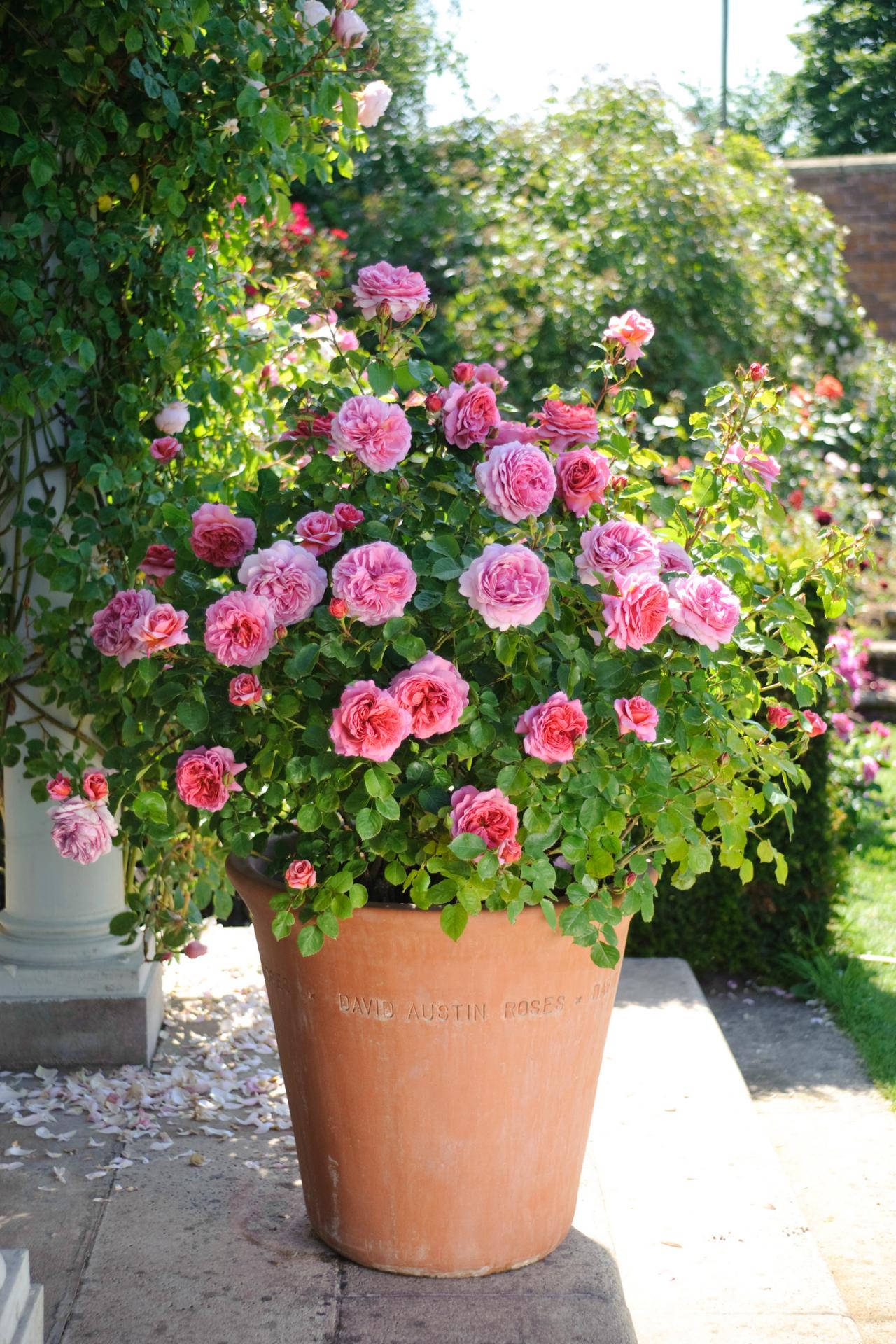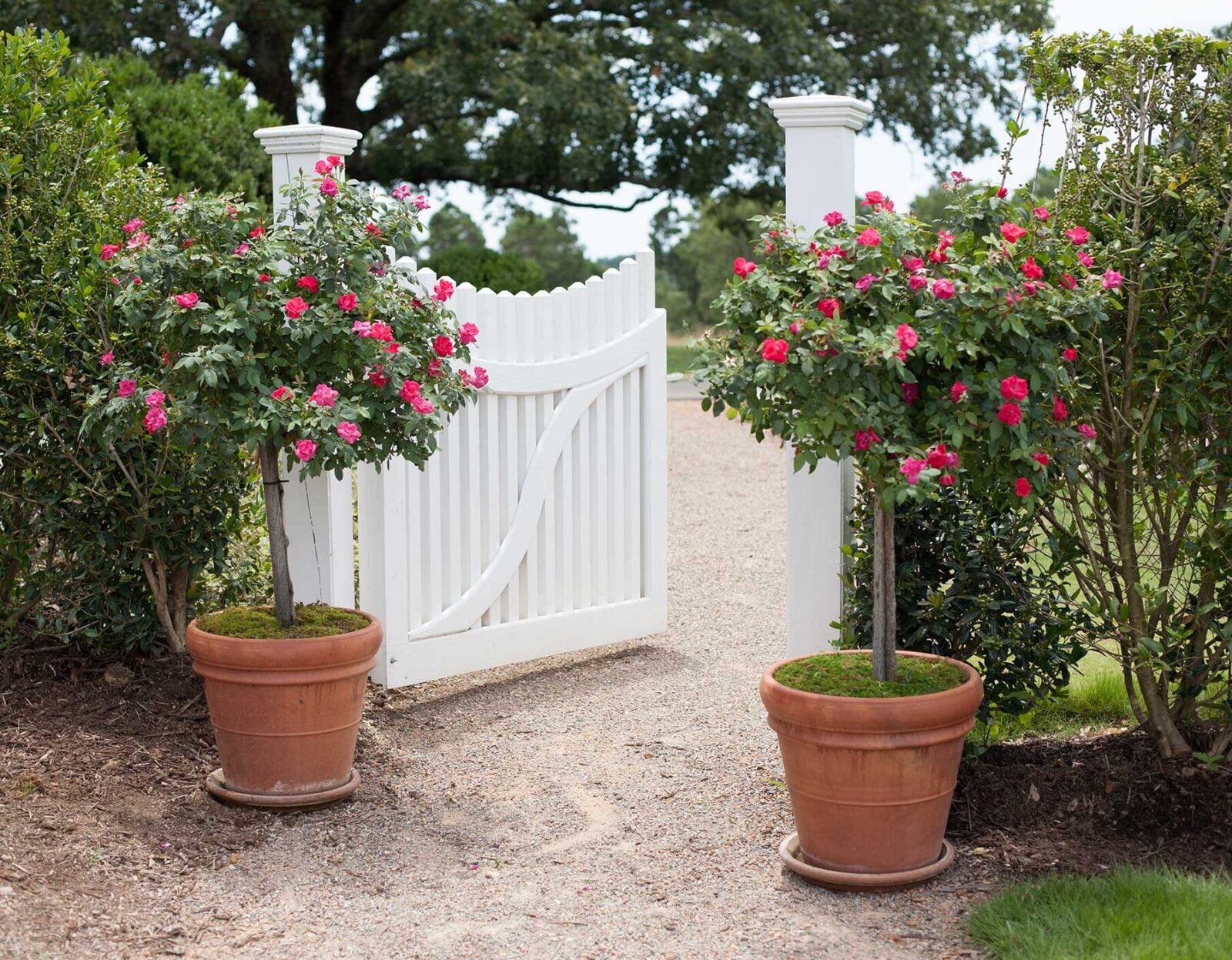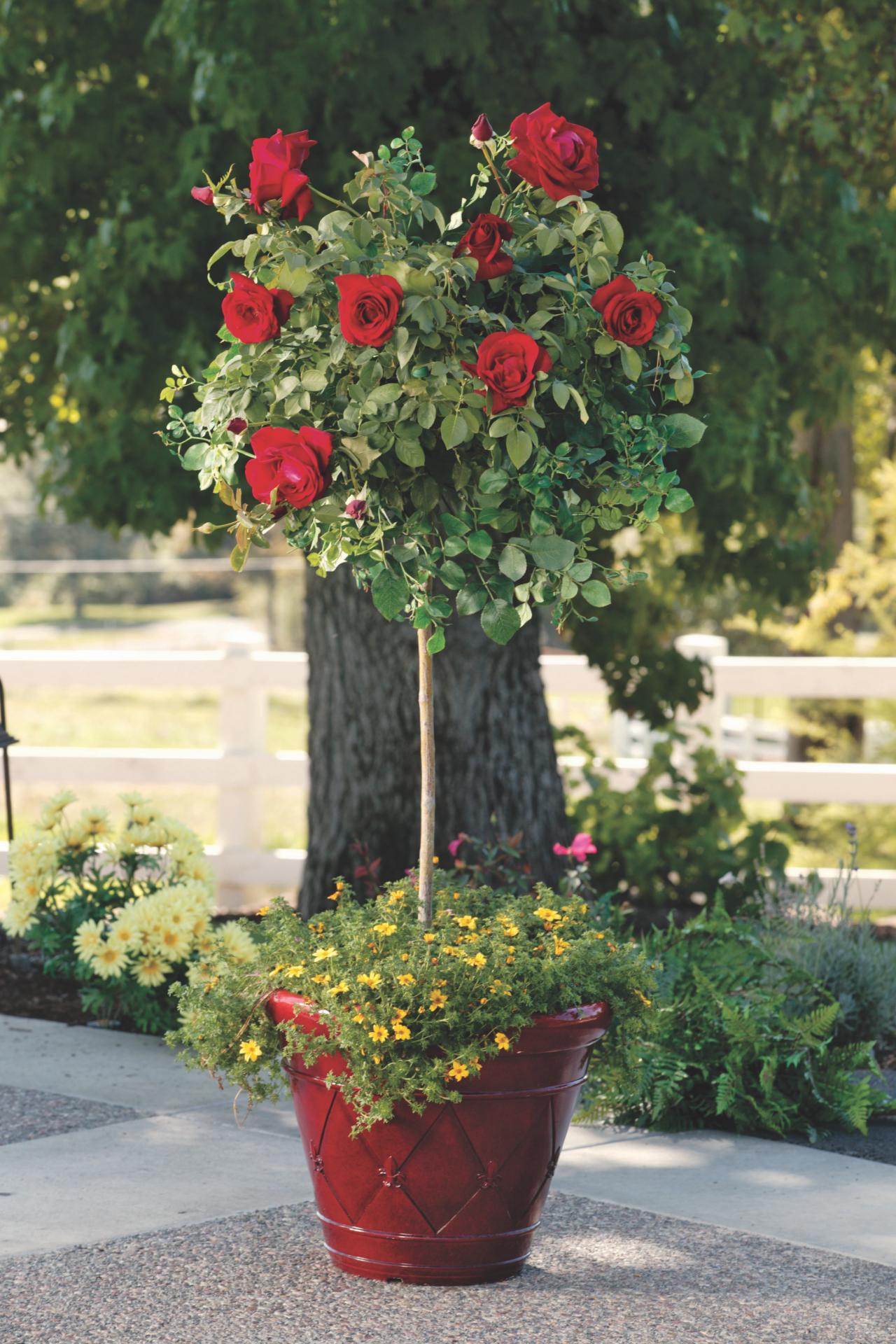Roses may thrive in a variety of pots, but when selecting the best pot for roses to grow in, there are a few important factors to keep in mind.
Roses grow best in pots made of ceramic, terracotta, or clay that are at least 12 inches across. Ceramic, terracotta, and clay planters and pots retain less heat in the summer than metal and plastic ones do, and they may withstand cold better in the winter, protecting the roots of the rose.
To avoid root rot, always use a pot with drainage holes in the base that allow excess water to drain away from the rose’s roots.
Read on to find out which containers and pots work best for roses as well as how to grow roses in pots without making frequent blunders.
Table of Contents
Best Pot Size for Growing Roses
Although there are many different sizes of roses, you should always plant them in pots with a minimum diameter of 12 inches and a depth that is proportionate to them.
This is so that the soil around the roots of your rose does not dry out too quickly, especially since roses prefer full sun and warm temperatures, both of which speed up the rate at which the soil dries. Roses also need a pot with a large enough capacity to hold enough soil, which helps to retain more moisture.
For maximum growth and flowering, roses need continually moist soil to prevent drooping.
If the pot is too tiny, water will evaporate from the soil more quickly, wilting the rose’s leaves and stems in the summer sun and need more regular waterings to keep them alive.
The dirt in smaller pots also occasionally bakes hard, which might divert water from the soil’s surface, preventing it from getting to the roots of the rose where it is needed.
Roses grown along garden borders are protected from the wintertime cold by the soil, which maintains the roots’ ideal temperature for survival.
The root system is practically above ground while a plant is in a container, making it more susceptible to damage from cold because the roots are the part of the plant that is most sensitive to freezing temperatures.
This is why choosing a larger pot is crucial since the roots are more sheltered from the cold in the winter when there is more soil in the pot, increasing their resistance to the cold.
Since their roots cannot stand being sat in soggy soil, roses need their soil to be consistently moist to prevent drooping. However, they also prefer the well-draining conditions of pots, so pots frequently achieve the ideal balance of moisture for roses, which is why roses frequently grow so well in pots.
Why are the leaves on my rose bush turning yellow? (Read my article.)
Best Material for Rose Pots
I have observed roses being grown in terracotta, clay, ceramic, metal, and plastic pots.
It should be emphasized, too, that metal containers and pots—even the thin plastic ones—heat up far more quickly in the sun. Since roses need direct sunlight, the pots heat up rapidly, drying up the soil and placing stress on the roots, which makes your rose wilt.
Anything that speeds up the rate at which the pot dries out will harm the rose since roses thrive best in damp soil with lots of organic content.
If you do decide to grow roses in metal or plastic containers, you must be careful to water them frequently to prevent drooping.
If the roses’ containers are heating up in the sun during the hottest seasons of the year, you may need to water them every day.
The ideal containers for growing roses are those constructed of ceramic, terracotta, or clay materials. Compared to plastic or metal pots, these pots tend to withstand weather better and don’t heat up as much in the summer. They can also frequently shield the roots from frost in the winter.
Additionally, clay pots are permeable, which might aid in preventing root rot when the pots become extremely wet from continuous rain.
Despite the fact that ceramic, terracotta, and clay pots are the finest for growing roses, a good-sized terracotta pot may become rather heavy when filled with soil, water, and of course the rose itself.
Compared to the lighter plastic pots, this can make it more difficult to transport, but it can also function as a counterbalance against winds because some roses grow tall and can be top heavy, which can lead them to tumble if the pot is too light.
(Read my article to learn why my roses aren’t in bloom.)
Good Drainage in the Base of the Rose’s Pot or Coantiner
The drainage holes in the base of the pot, which allow excess water to drain after watering, are by far the most crucial component of a rose’s pot or container.
Without drainage holes in the pot’s base, water just pools there and becomes saturated in the soil surrounding the rose’s roots, leading to root rot and the death of your rose.
Healthy roses require proper drainage.
I advise adding a layer of gravel to the bottom of the pot to further improve drainage since this creates a porous structure at the base of the pot that allows water to flow freely from the bottom. Additionally, this avoids any dirt at the base of the pot from being compacted, which could hinder the drainage of extra water.
You should elevate your rose pots by about one inch from the ground by setting them on small feet or stands. Once more, this enables water to exit the pot’s base without pooling underneath on the patio, where it can keep the soil around the roots of the roses too wet.
(Read my post on how to save a potted rose in trouble.)
Avoid Making This Common Error!
On occasion, I notice rose pots on patios with a sizable tray underneath to collect the water, preventing it from flowing out of the pot and all over the patio.
Pots with trays underneath them simply collect water after watering, and the water at the bottom of the pot encourages root rot.
To avoid root rot and maintain the health of your rose roots, always check that extra water may drain from the bottom of the container.
Key Takeaways:
https://www.youtube.com/watch?v=DCywtP2oaxc
FAQ
Can you put a bush rose in a pot?
Roses make great houseplants and pot plants. English roses are perfect for growing in big pots and containers because of their bushy, shrubby character.
How deep should a pot be for a rose?
Pick the appropriate container. Wooden containers are practical; plastic containers retain moisture; and unglazed terracotta dries out soon. A pot must be at least 6 to 8 inches deep for a miniature rose that is between 6 and 18 inches tall and at least 18 inches deep for a regular rose that is between 2 and 3 feet tall.
How deep are the roots of roses?
How far down do rose bushes go? Give your roses lots of room when planting them, especially big varieties like climbing roses since their roots can spread out and grow down to roughly 3 feet (90 cm) deep and 3 feet broad.
How deep are the roots of a rose?
How far down do rose bushes go? Give your roses lots of room when planting them, especially big varieties like climbing roses since their roots can spread out and grow down to roughly 3 feet (90 cm) deep and 3 feet broad.
How deep does a pot need to be for a rose?
Pick the appropriate container. Wooden containers are practical; plastic containers retain moisture; and unglazed terracotta dries out soon. A pot must be at least 6 to 8 inches deep for a miniature rose that is between 6 and 18 inches tall and at least 18 inches deep for a regular rose that is between 2 and 3 feet tall.



